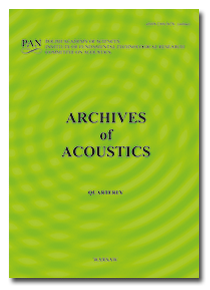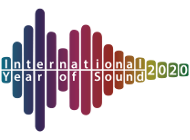Archives of Acoustics,
33, 3, pp. 323–330, 2008
Listeners' reaction time response to speech-in-noise material
The paper addresses the problem of choosing speech
material for the experiments concerning measurements of the composed reaction
time (CRT). A comparison was done of mean reaction times measured for a group of
subjects exposed to Polish vowels /a, e, i, o, u, y/ and to non-words recorded
on a dummy head against traffic noise (European Standard EN 1793-3) generated
from an open window. The results of this experiment, analyzed for various
signal-to-noise ratios and different reverberation conditions, indicate that the
mean reaction time was greater for non-words (when the subjects were exposed to
more complex signals) rather then for vowels. However, differences in the
relative growth of the reaction time values with decrease of signal to
noise-source output difference level (SNS) were relatively small.
material for the experiments concerning measurements of the composed reaction
time (CRT). A comparison was done of mean reaction times measured for a group of
subjects exposed to Polish vowels /a, e, i, o, u, y/ and to non-words recorded
on a dummy head against traffic noise (European Standard EN 1793-3) generated
from an open window. The results of this experiment, analyzed for various
signal-to-noise ratios and different reverberation conditions, indicate that the
mean reaction time was greater for non-words (when the subjects were exposed to
more complex signals) rather then for vowels. However, differences in the
relative growth of the reaction time values with decrease of signal to
noise-source output difference level (SNS) were relatively small.
Keywords:
reaction time; cognitive factors; speech; room acoustics
Full Text:
PDF
Copyright © Polish Academy of Sciences & Institute of Fundamental Technological Research (IPPT PAN).





